No Man's Sky and Understanding the Day One Patch
Hello Games has a huge patch ready for No Man's Sky, tackling a host of issues highlighted in early leaks.
This article first appeared on USgamer, a partner publication of VG247. Some content, such as this article, has been migrated to VG247 for posterity after USgamer's closure - but it has not been edited or further vetted by the VG247 team.
Yesterday, Hello Games released a huge set of patch notes for Patch 1.03, the day one patch for No Man's Sky. The patch is full of changes and new features for the title, pointing to a studio that didn't stop working on No Man's Sky even after it went gold weeks ago. Hello Games' Sean Murray acknowledged as much in the patch notes preamble.

"When we went gold five or six week ago, we posted on Twitter, and literally every reply was like 'hope you are going on a nice holiday!'. Some of us have, but I didn’t want to, not yet," writes Murray. "We’re under a pretty intense spotlight right now, and hopefully it’s easy to imagine how hard it would be to switch off from that, or how deeply we care about people’s first impression of the game. In fact most of us were back here the day after we went gold, working on this update. We’re already proud of what we put on a disk, but if we had time, why not continue to update it?"
And update it they have. There are now three unique gameplay paths you can experience during the game. A new universe generation algorithm means planets have moved, galaxies have changed shape and are up to 10x larger, creatures are more diverse and now have their own diets that determine player benefits, atmospheres are more varied, planets have new extreme hazards like blizzard and dust storms, caves are deeper, player and ship inventories are bigger, trading has been reworked completely, space combat has new maneuvers like brake drifting and critical hits, ground combat has been completely rewritten, and the graphics are improved. That's not even all of the patch notes, which you can read at the link above.
It is, by all measures, a game-changing patch.
Dealing With Leaks
That looks to be the point. The issues tackled in the patch notes seem to be a response to the game's broken street date. A week and a half ago, Redditor Daymeeuhn paid $1,300 for an early copy of No Man's Sky. He then proceeded to play the game on Twitch, upload video to YouTube and DailyMotion, and generally related the details of his gameplay time on Reddit. When he reached the game's galaxy center - which was considered to be 'endgame' by many - it seemed that he had done so much earlier than developer comments would indicate. Fans had some noticeable complaints and concerns.
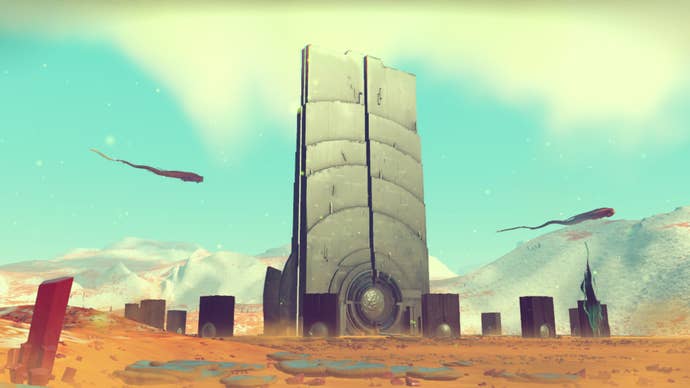
Over the weekend, outlets like Polygon and Kotaku obtained early copies of No Man's Sky from retailers who broke the street date. Since the servers were up, they began playing the game in earnest, trying to get an early start on their reviews. Hello Games was less than pleased, noting that without the day one patch, reviewers weren't playing the real game. Hello Games' programmer Harry Denholm also noted that Kotaku's early efforts were for naught, with the servers being wiped on Sunday.

Fan reception to the patch has been largely positive online. This is interesting, because until a few years ago, the simple idea of a day one patch, especially for console titles, was contentious at best. It's long been a part of the PC landscape, but freedom from patches used to be a benefit of consoles. Some players are still unhappy at the idea of a day one patch, because assuming you lack a persistent, solid internet connection, you're unable to get the game as the developer intended. They believe that if you pay $60, you should get the game, no compromises.
Others argue that there's no point to the retail disc with the size and caliber of some of these day one patches. Halo 5: Guardians had a huge 9 GB patch and Overwatch on consoles had a 9.5 GB one. Batman: Arkham Knight had a 3.5 GB day one patch. The Witcher III: Wild Hunt had a relatively small one at 588 MB. Tony Hawk Pro Skater 5 had a day one patch that was larger than the actual game, coming in at 7.7 GB for a 4.6 GB game.
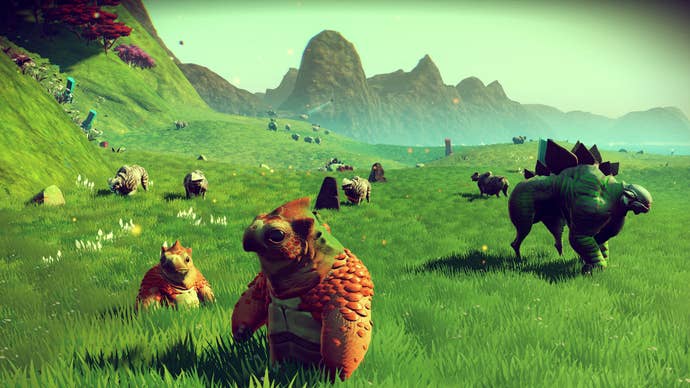
I'm sympathetic to both viewpoints, but there's not much that can be done, given the current state of game development. No Man's Sky is meant to be played with an internet connection and the patch itself is only 800 MB. It's clear that having internet is simply what you need to be an enthusiast gamer these days. (Yes, there are issues with that, notably when it comes to game curation, but that's a whole other article.)
Patches, while rather annoying - there's nothing like wanting to play a game, popping in a disc, and having to wait for it to patch - tends to make games better. They either fix bugs, make tweaks, or vastly improve certain features in the game and that's always a good thing in my book. I'd rather have No Man's Sky with the features listed above than without.
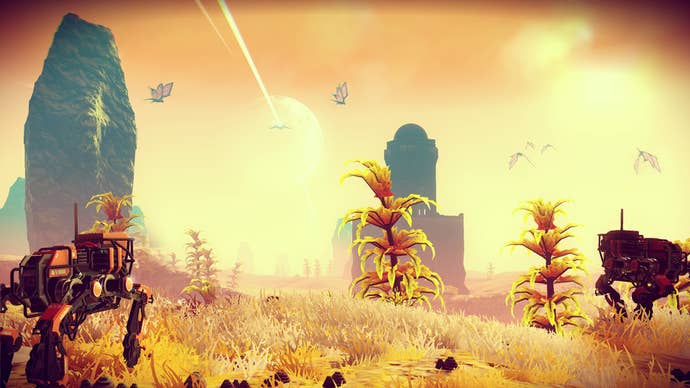
Understanding Certification, the Process Behind the Day One Patch
There's also another reason for the rise in the day one patch: console game certification. In a lengthy blog post, Vlambeer's Rami Ismail lays out why game developers frequently rely on day one patches these days. He starts by making two relevant points.
"Consoles are platforms and devices that come with an expectation of quality, and as such have systems in place to ensure that quality," writes Ismail. "Developers are creatives working on a commercial schedule, leading to the ancient and never-broken rule that a developer will always be two weeks late for their deadline – no matter how big or small the deadline is."
On PC, developers bear the weight of releasing a broken game. They can push out a title and patch it at any time. If it's broken, it's up to them to fix it and that's not seen as a reflection on the platform itself. When Batman: Arkham Knight was broken on PC, no one blamed Steam for the issue. On consoles, that's not the case. Platform holders like Sony, Microsoft, and Nintendo are tasked with ensuring a base level of performance for a game.
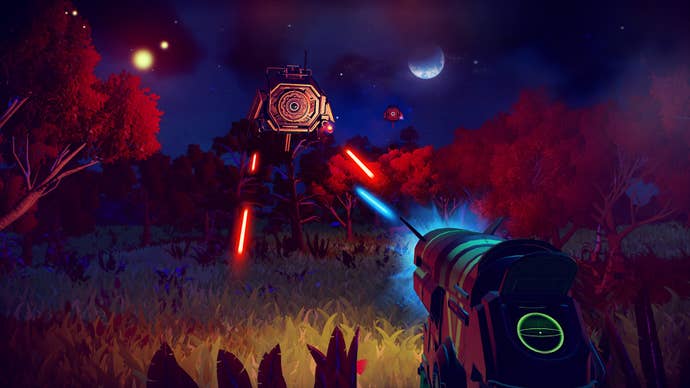
"Consoles come from the 'Seal of Quality' mindset," explains Ismail. "To ensure that quality, they use a system called 'certification'. Devs like to call this quality assurance process ‘cert’, and no matter what developer you ask, you’ll find most developers understand why it exists, and we all really appreciate all the people working super hard to ensure our games are working right, but we tend to all hate 'cert'."
"What you have to imagine when it comes to cert, is a giant book of checkboxes. There’s an absurd amount of them, and they could be different not only per platform, but per territory (for example, a European build has different certification rules than a US one, requiring differences between the two), and sometimes even between a patch, a DLC, and a release version."
Ismail points to the various things a developer has to take into account, only some of which are understandable. Not crashing makes sense, as does the game requiring clear parental controls. But he points to others that cause developer headaches, like not allowing UI to be on the outer 10 percent of the screen or the fact that the console in question can't have a firmware update in-between the release build and the patch. All this just to get through the certifcation process.
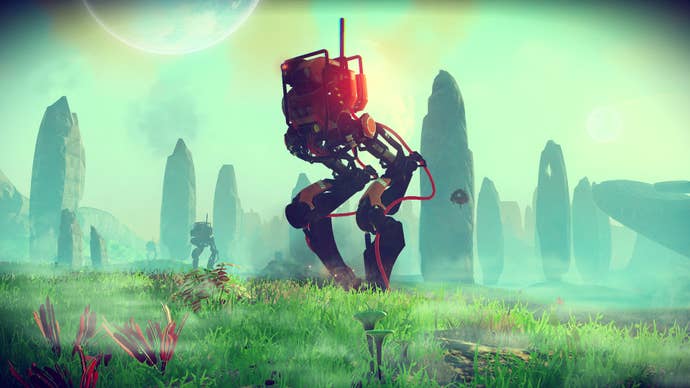
"Certification is a big thing," Ismail adds. "The process for it is also a big thing. In most cases, you have to fill out a weirdly complex form for your submission, and then 'book a slot' of sorts, or wait until you get an OK to submit your game. Since the people testing games aren’t infinite, you need to let people know when you’re submitting your build. So you check which dates are available, and usually there’s a free slot a few days from today."
"If your build isn’t in a certain amount of time ahead of that, your slot can be lost, and you’ll have to 'book' a new one. When the slot starts, and your game goes into certification, there’s a variety of reasons your submission can be rejected, in which case your slot can be lost too. Then, the teams start testing, and they report certification violations to you. If any of them exceed a certain level, your submission fails, and you have to start from square one and fill out the form, find a free day to book a slot or wait until certification starts, and submit a new build."
"What I’m trying to say is that certification could take a week, and in the worst cases, it could take months," Ismail highlights. "From personal experience, I can say that it can make developers cry. It could delay your game. At the end, though, the game that launches checks every checkbox. You’ve got your proverbial 'Seal of Quality'. Your game is allowed to launch."

So what developers do is they submit the version of their game that works and checks off all the boxes for certification. If there's a feature that they want in the game at launch that doesn't currently work or might derail the cert process, they cut it, until such time as they can get it fully working. Especially when it comes to retail games on disc, which have to go through certification and printing.
"For a game that goes on disc, the 'gold' build that went through certification is one to three months old by the time the game launches," Ismail says. "That gives developers half a month to two and a half a month to do a month and a half to three and a half months' worth of work to make the game 'perfect' while still hitting the release date with the patch. If your studio is nimble and small, you can change enormous portions of the game in that span of time."
"So in the hypothetical example of No Man’s Sky, when No Man’s Sky launches, for most people, it’ll launch into the intended experience thanks to the Day 1 Patch. That build is as close to what the developers envisioned as they worked, learned and improved upon that vision. That’s No Man’s Sky. The version that is on the disc, however, is months old. The only way to avoid that kind of thing is to not launch on disc."
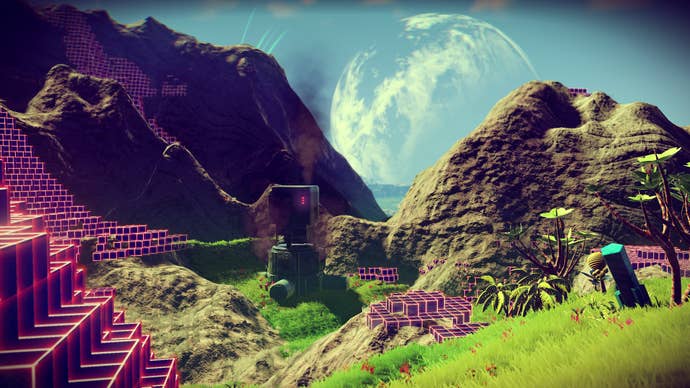
Since the gulf between certification and launch can be months long, would players rather developers not use this time to improve the game? A game going gold means it can be put on retail discs, but developers don't always have the luxury of delaying a game forever. Contracts, scheduled release dates, and consumer expectations mean that sometimes, a game has to come out. So instead, they give it their best shot for the disc and launch, while working furiously in the background to patch in all the stuff that's really in their vision for the game.
"If consoles operated like Steam did, No Man’s Sky wouldn’t have a Day 1 Patch, because the build you’d download and play when it comes out would’ve been submitted comfortably a few days before launch," says Ismail. "Day 1 Patches aren’t necessarily a failure on the developers or the platforms side, they the result of people that care about what they make, trying to deliver the game the audience expects by the date they expect it, while everybody involved is struggling with outdated systems on cutting-edge technology."
"Everyone is trying their hardest. Nobody is doing anything wrong. The developer isn’t lazy. The platforms aren’t malicious. Day 1 patches are simply a patch to a submission system that’s old and convoluted."
So No Man's Sky has a day one patch. You are armed with that knowledge and can handle it how you see fit. I'm going to be playing it though, which is why I've set up the download ahead of time. Have to make sure that day one patch gets downloaded too.





.jpg?width=291&height=164&fit=crop&quality=80&format=jpg&auto=webp)
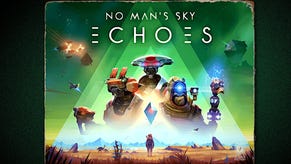
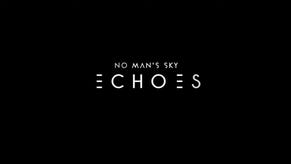
.jpg?width=291&height=164&fit=crop&quality=80&format=jpg&auto=webp)








